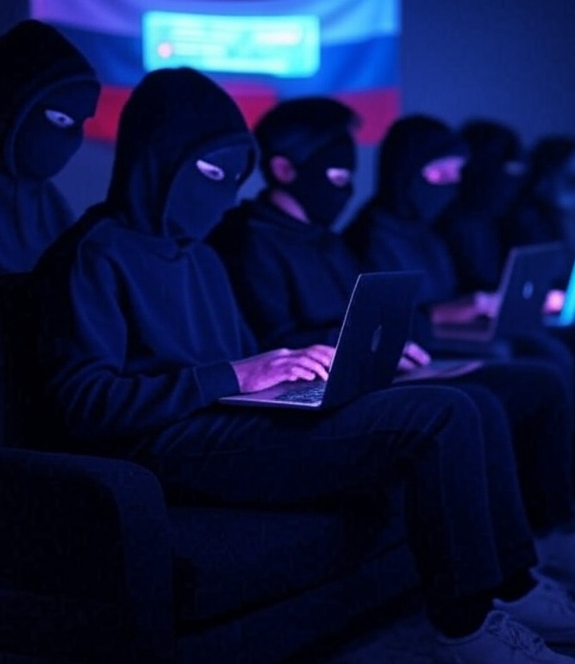
THE ANATOMY OF A TROLLING CAMPAIGN: STRATEGY, STRUCTURE, AND SECRECY
Trolling is not merely a disruptive online behaviour but a deliberate modus operandi that follows a sophisticated and systematic approach:
- 1. Target Selection: Trolls select individuals, organizations, or issues based on perceived vulnerability, media traction, or ideological opposition. High-profile targets such as political dissidents, journalists, celebrities, and activists are often chosen to maximize visibility and disruption
- 2. Narrative Engineering: Expert content writers and meme creators construct false narratives, emotionally charged messages, and provocative materials that are designed to trigger outrage, fear, or confusion. These messages are often couched in partial truths, sarcasm, or twisted logic to mask their malevolent intent.
- 3. Distribution Tactics: Using an arsenal of tools — fake accounts, automated bots, algorithmic gaming techniques, and closed-group coordination — trolls ensure high engagement and virality. The appearance of organic mass opinion is artificially manufactured to create legitimacy and momentum.
- 4. Engagement Manipulation: Coordinated liking, commenting, and retweeting are executed with precision to mislead platform algorithms and amplify visibility. Repetitive messaging is used to imprint certain themes and normalize toxic ideologies.
- 5. Obfuscation and Exit: Once the desired narrative has penetrated mainstream discourse or damaged the target’s credibility, troll operators often dismantle or abandon their digital footprints, making attribution and accountability exceedingly difficult.
WHO ARE THE TROLLS? A COMPLEX SPECTRUM OF DIGITAL ACTORS
The trolling ecosystem is comprised of diverse agents who function with varying motives and degrees of sophistication:
- Ideological Extremists: Individuals or groups driven by a political, religious, or cultural agenda
- Paid Operatives: Contractors and freelancers recruited by political consultancies, PR agencies, or intelligence units.
- State-Sponsored Entities: Government-aligned cyber units operating under a veil of deniability to conduct psychological operations. It is easier to disown any such actor exploiting the plausible deniability clause, which protects the sponsoring entity from legal or diplomatic consequences
- Disillusioned Youth: Individuals seeking social validation, emotional catharsis, or monetary gain.
COMMAND STRUCTURES AND CHANNELS OF INSTRUCTION
Contrary to the assumption that trolling is spontaneous, many campaigns are executed under explicit directives. These instructions are disseminated via:
- Encrypted Messaging Platforms (e.g., Telegram, Signal)
- Private Discord Channels or Reddit Subforums
- Dark Web Marketplaces and Forums
- Instructional Google Docs or Spreadsheets shared pseudonymously
ARTIFICIAL INTELLIGENCE: THE AMPLIFIER OF DIGITAL SUBVERSION
Recent developments in AI have exponentially enhanced the reach, volume, and complexity of trolling tactics:
- AI Content Generation: Large Language Models (LLMs) are misused to generate persuasive disinformation, hate speech, and emotionally manipulative narratives.
- Deepfake Videos and Audio: These are used to fabricate events or frame individuals.
- Sentiment Analysis Tools: Employed to identify vulnerable targets and optimal timing for attack.
- Botnets: AI-powered botnets simulate human behavior, bypass detection, and engage in highfrequency posting.
THE PSYCHOLOGICAL AND SOCIETAL IMPACT OF TROLL ATTACKS
Trolling leaves a trail of destruction that often surpasses virtual boundaries:
- Mental Health Degradation: Victims suffer from anxiety, depression, and suicidal ideation.
- Reputational Sabotage: Professional careers are jeopardized through misinformation.
- Social Polarization: Troll campaigns are designed to deepen divisions and radicalize opinion.
- Censorship by Intimidation: Fear of trolling compels many to self-censor, eroding free expression.
ECONOMIC DIMENSIONS: FUNDING AND INCENTIVIZATION
Troll operations, particularly those involving commercial or political objectives, entail a structured monetization model:
- Fixed Monthly Payments for dedicated team members ($200–$5,000+ depending on role and scope)
- Performance-Based Bonuses linked to virality or engagement metrics.
- Per-Post/Per-Campaign Earnings for freelance contributors
- Cryptocurrency Transactions to ensure anonymity
CONTENT ARCHITECTURE: STRATEGIC MESSAGING, NOT RANDOM RANTING
Contrary to popular belief, troll-generated content is not haphazard. It often exhibits:
- Ideological Consistency
- Grammatical Precision
- Multilingual Reach
- Media Layering (memes, fake screenshots, misquoted videos)
LEGAL COUNTERMEASURES: STRENGTHENING STATUTORY ENFORCEMENT AND JURISPRUDENTIAL RESPONSE- INDIA
The proliferation of coordinated trolling campaigns necessitates a robust and dynamic legal response rooted in statutory precision and judicial enforceability. Indian legal jurisprudence, in alignment with global norms, provides multiple statutory instruments to address such digital offenses. CODIFIED PROVISIONS UNDER INDIAN PENAL CODE (IPC) AND BHARATIYA NYAYA SANHITA
- Defamation (Section 499, IPC)
The act of publishing defamatory content—whether in written, spoken, or digital form—is punishable under Section 499 of the IPC. Online defamation is treated with equal severity, especially when the imputation harms the reputation of an individual or institution. - Criminal Intimidation (Sections 506 & 507, IPC)
Section 506 criminalizes threats intended to cause alarm to a person or to compel them to act against their will. Section 507 further criminalizes criminal intimidation when conducted via anonymous or pseudonymous communication, a tactic frequently adopted by online trolls. - Harassment and Stalking (Sections 354A, 354C, 354D, IPC)
- These provisions address various forms of harassment, including:
- Section 354A: Sexual harassment through unsolicited communication or remarks.
- Section 354C: Voyeurism, particularly relevant in cases involving leaked private images or videos.
- Section 354D: Cyberstalking or persistent digital pursuit with malicious intent.
- 1. Transmission of Obscene Content (Sections 67 & 67A) These sections provide punitive measures for individuals who publish or circulate obscene or sexually explicit material in electronic format. Violations may result in imprisonment and/or monetary penalties.
- 2. Violation of Privacy and Incitement (Section 66E) This provision criminalizes the intentional capture, publication, or transmission of private images without consent, particularly where such acts may provoke hostility, incite violence, or cause reputational harm.
- 3. Intermediary Accountability and Data Retention (Section 79 & Rules thereunder) Platforms acting as intermediaries are obligated to exercise due diligence, including prompt takedown of offensive content upon receiving actual knowledge or a government directive.
- Dedicated Cybercrime Units: Augmentation of police forces with specialized cybercrime units and forensic labs to investigate and prosecute trolling offenses effectively
- Cross-Jurisdictional Cooperation: Trolling operations often transcend territorial boundaries, necessitating mutual legal assistance treaties (MLATs), interpol red notices, and formal extradition protocols.
- Judicial Sensitization and Capacity Building: Continuous training of judicial officers to interpret cyber laws in light of evolving digital landscapes
COMPARATIVE PERSPECTIVE: INTERNATIONAL LEGAL FRAMEWORKS ADDRESSING ONLINE TROLLING
To develop a more comprehensive and globally harmonized approach to combating online trolling, it is essential to examine international legal instruments and national statutes from jurisdictions with advanced cyber regulatory frameworks. Several countries have instituted explicit measures to address coordinated digital harassment, misinformation, and algorithmic manipulation.
UNITED STATES: LEGAL RECOURSE THROUGH CIVIL AND CRIMINAL MECHANISMS
- Communications Decency Act (CDA), Section 230: While this provision grants immunity to platforms for user-generated content, there is an ongoing policy debate regarding its reform to mandate stricter accountability for enabling coordinated trolling or failing to act against known abuse.
- State-Level Anti-Cyberstalking Laws: Various U.S. states have implemented cyberstalking statutes that criminalize repeated and unwanted online communication intended to harass or intimidate.
- Federal Trade Commission Act (FTCA): Troll operations that involve deceptive commercial practices or spread misinformation can be prosecuted under unfair trade practices provisions.
- Digital Services Act (2022): The DSA imposes obligations on Very Large Online Platforms (VLOPs) to identify and mitigate systemic risks, including coordinated disinformation and manipulation campaigns. Platforms must conduct annual risk assessments and implement countermeasures with independent oversight.
- General Data Protection Regulation (GDPR): Unauthorized use of personal data in trolling activities—such as doxing or targeted harassment—may lead to severe penalties under data protection laws.
- EU Code of Practice on Disinformation: While voluntary, this code guides signatories (including major platforms) to disrupt monetization of disinformation and improve transparency in political advertising.
UNITED KINGDOM: ONLINE SAFETY BILL (2023)
The Online Safety Bill mandates that digital platforms take proactive steps to mitigate harmful content, including trolling and online abuse. The UK’s Office of Communications (Ofcom) is empowered to investigate and sanction platforms that fail to comply, with fines up to 10% of global revenue.
AUSTRALIA: ONLINE SAFETY ACT (2021)
Australia’s eSafety Commissioner has sweeping powers under this legislation to:
- Order removal of harmful online content
- Investigate systemic abuse
- Impose civil penalties on individuals and corporations involved in cyberbullying or abusive trolling.
CALL FOR A MULTILATERAL CYBER CONVENTION
Given the transnational nature of trolling campaigns and the jurisdictional limitations of domestic laws, there is a compelling need for a multilateral treaty framework modelled after conventions such as the Budapest Convention on Cybercrime. Such a framework would:
- Standardize definitions of digital offenses including coordinated trolling
- Facilitate evidence sharing and joint investigations
- Harmonize extradition provisions for cyber offenses
- Enable collaborative capacity-building for digital law enforcement units
TECHNOLOGICAL COUNTERMEASURES: LEVERAGING INNOVATION TO COMBAT ABUSE
Technology, when responsibly deployed, can play a pivotal role in disrupting troll ecosystems:
- AI-Based Detection Systems: Machine learning models can be trained to identify behavioural patterns typical of coordinated inauthentic behaviour.
- Bot and Deepfake Detection Tools: Algorithms capable of recognizing synthetic content can flag malicious uploads in real time.
- Digital Identity Verification: Stronger Know-Your-Customer (KYC) protocols for account creation can reduce the spread of fake profiles.
- Blockchain for Attribution: Immutable ledger systems can be used to track content origination and boost accountability.
- Collaborative Threat Intelligence Platforms: Sharing real-time threat data between governments, platforms, and cybersecurity firms can reduce response time.
The phenomenon of trolling is no longer a marginal nuisance; it is a multi-faceted threat to democratic values, social cohesion, and national security. Combating this threat requires:
- Robust Legal Frameworks to classify and penalize coordinated trolling
- Cross-Border Intelligence Sharing to track and expose transnational operations
- Platform Accountability through stronger moderation policies and transparency mandates
- Public Awareness and Digital Literacy to immunize citizens against manipulation
- Technological Innovations to automate detection and enhance cyber defences
An insight by Biswajit Chatterjee. Specialist in National Critical Infrastructure Protection.
Zettawise Consulting Pvt Ltd.



